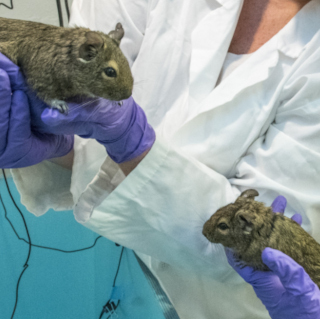Birds: Quarantine Procedures
Date Adopted: November 1, 2022
I. Purpose
This Standard Operating Procedure (SOP) outlines the quarantine of newly arrived birds to the Fort Missoula Field Research Station. This procedure applies to all personnel involved in the care of captive birds housed at the Fort Missoula Field Research Station’s (FMFRS) outdoor or indoor aviaries.
II. Policy
It is a LAR policy to meet or exceed all federal, state, and local regulations and guidelines and to comply with all institutional policies and procedures as they apply to the use of animals in research. LAR personnel or Investigators involved in husbandry and care must pass on-line animal training modules and attend applicable training in animal care and use, occupational health and safety, and equipment operation before performing activities outlined in this SOP. Animal housing rooms should be entered using appropriate personal protective gear for the species and disease or hazard containment level.
III. Quarantine Procedures for Newly Arrived Birds
Wild and domestic birds brought into the Field Research Station at Fort Missoula (FRSFM) potentially carry bacteria, viruses, parasitic, protozoal, and coccidial infections that are transmissible to other birds housed in and outside the facility. Although no laboratory testing is performed on these birds to diagnose or treat any potentially infectious diseases, attempts to mitigate transmission of diseases between the bird populations (temporary or long-term) must be made.
1. Outdoor Aviary Quarantine
a) Bird populations that have been housed in the indoor facility for a quarantine
period of 14 days, have exhibited no symptoms of illness, and have been
treated with prophylactic medications, may be moved into adjacent aviaries
previously populated with birds.
b) Bird populations that have not undergone quarantine procedures within the
facility should be placed in non-adjacent aviaries for 14 days while they
receive prophylactic medications and are monitored for signs symptoms of
disease.
c) After a 14-day quarantine and prophylactic treatment, birds may be moved
into aviaries adjacent to previously housed or long-term housed birds.
d) If non-adjacent aviaries are not available due to high demand for the
outdoor aviaries, the situation will be addressed on a case by case basis in
consultation with the FRSFM Director, the investigators involved, and the
Attending Veterinarian (the investigators involved will be informed of the risks
of infection and the implications to their study).
2. Indoor Aviary Quarantine
a) Birds housed within the facility in housing rooms are effectively quarantined
within the individual rooms.
b) The HVAC system at the FRSFM does provide 30% of recirculated air, and
there is a small risk associated with disease transmission due to fomites
recirculated through the air vents. This risk cannot be ameliorated, and all
investigators assume this risk when housing their birds indoors.
c) Investigators will refrain from entering other investigator’s areas.
d) If an investigator must enter another indoor housing area, they must wear
shoe covers, lab coat, and nitrile gloves in order to prevent fomite
transmission to other housing areas.
